Hanwha Resort - Gyeongju (한화리조트 경주)
15.4Km 15062 2020-09-08
182-27, Bomun-ro, Gyeongju-si, Gyeongsangbuk-do
+82-54-777-8400
Hanwha Resort Hotels & Resorts is a leading hospitality & leisure company with the highest number of condominiums and golf courses across Korea. Hanwha Resort in Gyeongju Bomun Complex (a World Heritage site) has a wide range of subsidiary facilities including banquet halls, seminar rooms, a hot spring sauna, bicycle rentals, a bowling alley, an outdoor swimming pool, supermarket, singing room and more. There are a total of four designated guestrooms for people with disabilities, with rooms equipped with beds in the annex building. All rooms are equipped with up-to-date amenities while having a simple design that is always ready to welcome the visitors.
Gyeongju Country Club (경주컨트리클럽)
15.4Km 12809 2015-02-16
182-98, Bomun-ro, Gyeongju-si, Gyeongsangbuk-do
+82-54-745-2228
Gyeongju Country Club is located within Bomun Tourism Area with spectacular scenery of the Bomun Lake. It is within 15 minutes from Gyeongju and is aiming to become the best golf course in Korea.
The characteristic of Gyeongju Country Club is "Light Golf" which has enabled players to play golf at night and at daybreak under perfect light settings. It is located in Gyeongju, which is a tourism city, attracting the attention of tourists who love golf.
Bomun Golf Club (보문골프클럽)
15.7Km 12858 2021-04-16
182-14, Bomun-ro, Gyeongju-si, Gyeongsangbuk-do
+82-54-745-1680
Bomun Golf Club is located in the historic cultural city of Gyeongju. Situated within Bomun Tourist Complex, visitors can enjoy golf and many attractions.
Gyeongju Bulguksa Temple [UNESCO World Heritage] (경주 불국사 [유네스코 세계문화유산])
15.8Km 241163 2023-01-03
385, Bulguk-ro, Gyeongju-si, Gyeongsangbuk-do
+82-54-746-9913
Bulguksa Temple is a representative relic of Buddhist culture from the Silla kingdom. The temple was built during the 15th year of King Beopheung's reign (514-540) to wish for peace and prosperity for all. It was later rebuilt in 751 by Kim Dae-seong. Unfortunately, the temple caught fire during the Imjin War (1592-1598). After the war, the temple suffered serious damage and was often the target of theft.
Starting in 1920, the temple has undergone continual restoration work. The temple now holds seven national treasures and a number of additional important heritages and was designated a World Cultural Heritage Site along with the nearby Seokguram Grotto by UNESCO in December 1995.
Ulsan Petroglyph Museum (울산암각화박물관)
16.0Km 34628 2021-02-22
254, Bangudaean-gil, Ulju-gun, Ulsan
+82-52-229-4797
Ulsan Petroglyph Museum was established on May 30, 2008 at the entrance to Petroglyphs of Bangudae Terrace (National Treasure No. 285) in Ulju-gun. The museum displays 311 exhibit materials and has an exhibition hall, a storage room, a research lab, and an audiovisual room.
The exhibition hall presents models of petroglyphs of Bangudae and petroglyphs of Cheonjeon-ri (National Treasure No. 147), an educational video introducing the petroglyphs, a children’s hall, and family activity facilities. Visitors can observe reproductions of famous petroglyphs at the outdoor exhibit.
Dayu (다유)
16.2Km 10506 2019-08-01
84-5, Moksil-gil, Cheonbuk-myeon, Gyeongju-si, Gyeongsangbuk-do
+82-54-773-8866
Located in Mulcheon-ri, Gyeongju-si, Dayu offers a comfortable resting place for visitors who need to rest and recharge during their trip. The restaurant serves nutritious meals for vegetarians and traditional teas.
Petroglyphs of Bangudae Terrace (울주 대곡리 반구대 암각화)
16.5Km 26550 2023-07-17
285, Bangudaean-gil, Ulju-gun, Ulsan
+82-52-204-0322
In Daegok-ri, Eonyang-eup sits Bangudae Terrace, a picturesque spot where a ridge of Yeongosan Mountain extends to and stands tall to form quite a spectacle featuring uniquely shaped rocks and cliffs. The name, Bangudae, comes from how it resembles a turtle lying prone on the ground. Petroglyphs are paintings drawn by people from the prehistoric times carved on rocks and depicting various scenes and events in their daily lives. Petroglyphs were often drawn on enormous rocks and other sacred locations of groups, and it is believed that people gathered around them to hold various rituals.
Petroglyphs of Bangudae Terrace in Daegok-ri, Ulju-gun are estimated to have been drawn over several periods since the New Stone Age so you can discover the differences in styles among various ages. Primary objects that were popularly carved include sea animals, land animals, humans and tools and, as our prehistoric ancestors actively engaged in hunting, the hope of abundance in game is believed to be the reason why these objects were frequently carved on rocks. Vividly expressing animals and hunting scenes and colorfully depicting outstanding traits of objects, these petroglyphs are a form of both hunting art and religious art, and they are considered as the greatest masterpieces from which we can take a peek at the life and customs of the prehistoric ages.
Unmunsan National Recreational Forest (국립 운문산자연휴양림)
16.7Km 169589 2021-07-16
763, Unmun-ro, Cheongdo-gun, Gyeongsangbuk-do
+82-54-371-1327
Unmunsan National Recreational Forest in Cheongdo, Gyeongsangbuk-do is located at the foot of Unmunsan Mountain (1,188 meters), which is also called Hogeosan Mountain. It is a great place to spend time in summer for hiking and camping, surrounded by taller mountains (more than 1,000 meters above sea level) such as Munboksan Mountain (1,014 meters) and Gajisan Mountain (1,240 meters).
Yongmipokpo Falls (20 meters) and Byeokgyesu Valley, in which the waters flow across the sandless rock bed, are famous locales in the forest. Located in a thick broadleaf forest, inhabited by many diverse species such as Korean mountain camellia, Unmunsan National Recreational Forest offers lush greenery in summer, beautiful foliage in autumn, and cozy, splendid snowscapes along with the Yongmi Ice Wall in winter. In Unmunryeong, located 2.5 kilometers to the east, visitors can watch the spectacular sunrise above the East Sea.
Dodong Sanbang (도동산방)
17.4Km 8210 2019-02-12
133, Songnakgol-gil, Ulju-gun, Ulsan
82-52-254-7076
Dodong Sanbang is a restaurant with five separate traditional Korean buildings situated on a large plot of land. It serves great traditional Korean set meals, and has a separate tea room where customers can enjoy a cup of tea after dining. Excluding winter, the restaurant offers a special program called “tteok mechigi” (rice cake pounding) where customers are invited to pound (or make) a rice cake with a mallet and eat it. The restaurant also includes a traditional souvenir shop and rice cake shop, and offers cultural programs.
Gyeongju Seokguram Grotto [UNESCO World Heritage] (경주 석굴암 [유네스코 세계문화유산])
17.5Km 137981 2023-08-24
873-243, Bulguk-ro, Gyeongju-si, Gyeongsangbuk-do
+82-54-746-9933
Seokguram Grotto was constructed by Kim Dae-Seong during the reign of King Gyeong-Deok (742-765) of the Silla Kingdom. Located 3 kilometers away by hiking trail and 9 kilometers by car from Bulguksa Temple, the grotto was designed very harmoniously with the seated Buddha facing the East Sea. It is a valuable cultural heritage that is preserved and registered as a UNESCO World Heritage on December 6, 1995.
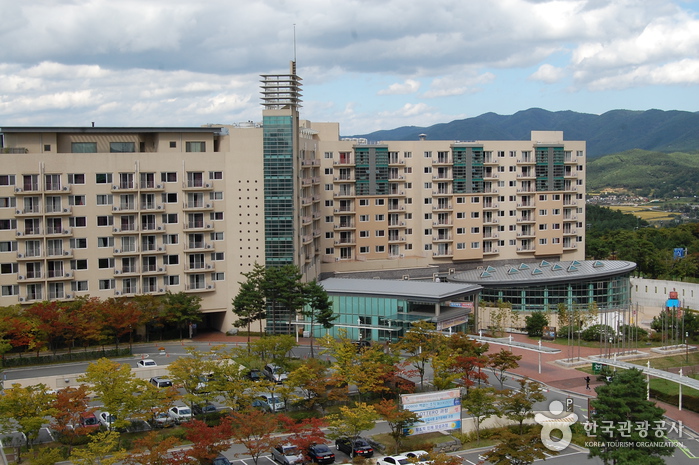

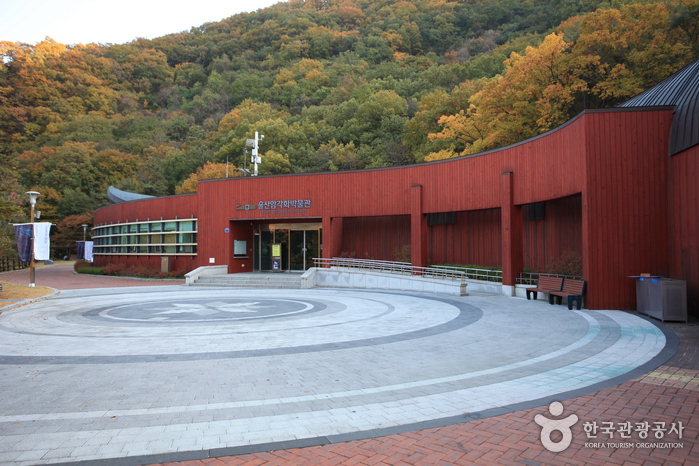
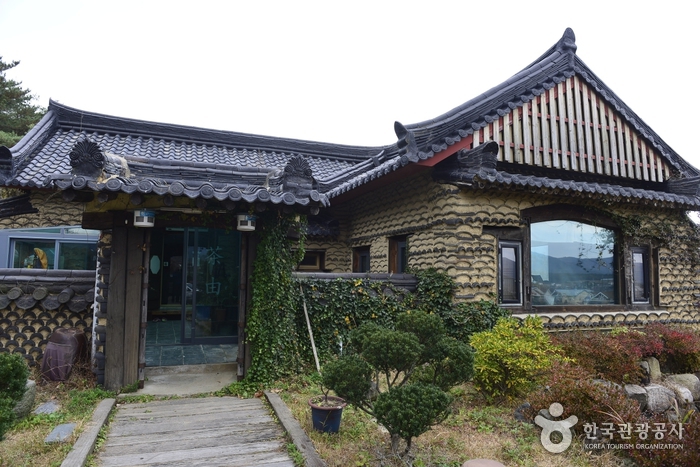
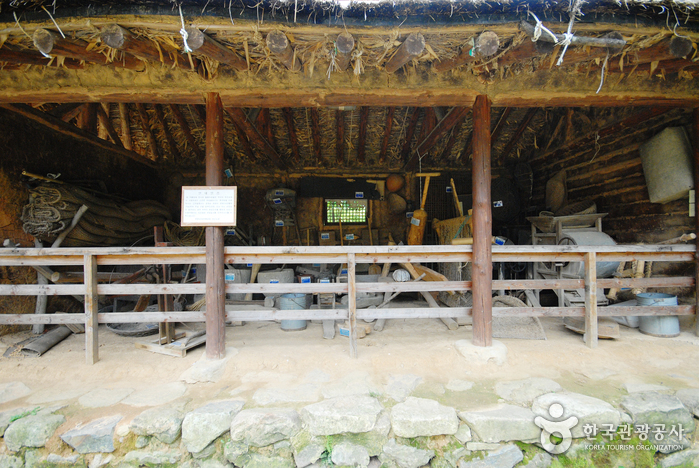
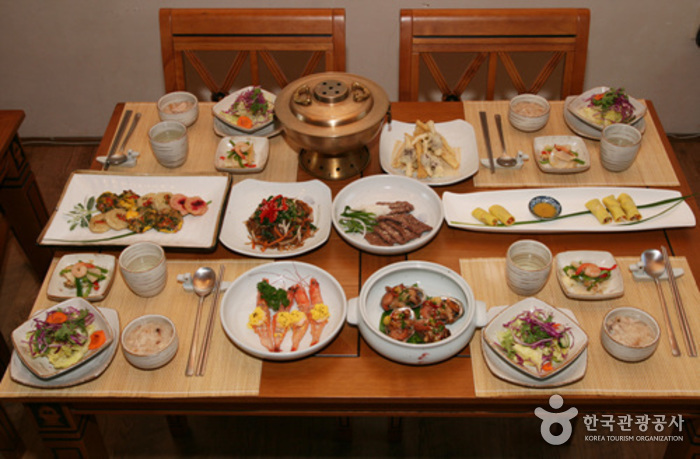
 English
English
 한국어
한국어 日本語
日本語 中文(简体)
中文(简体) Deutsch
Deutsch Français
Français Español
Español Русский
Русский